Tobias Pfandzelter
FOOL: Addressing the Downlink Bottleneck in Satellite Computing with Neural Feature Compression
Mar 25, 2024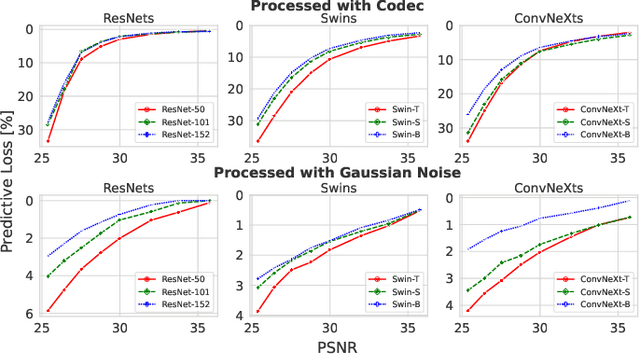
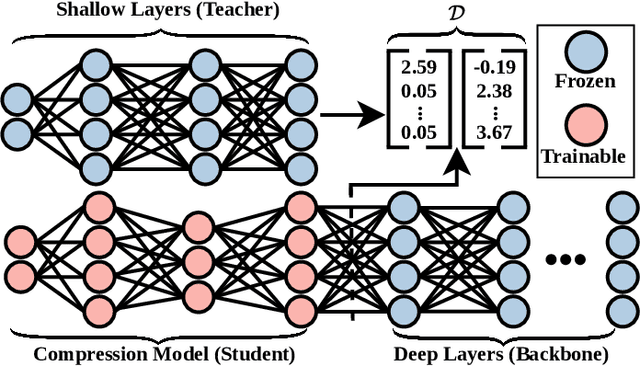
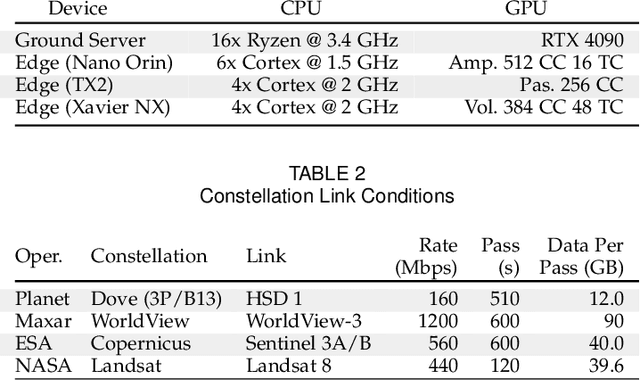
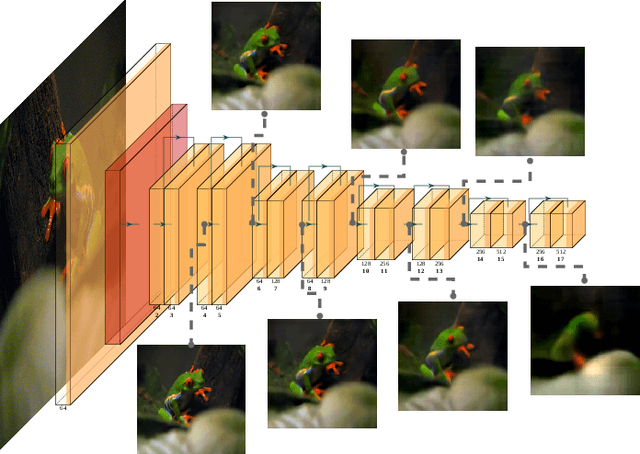
Abstract:Nanosatellite constellations equipped with sensors capturing large geographic regions provide unprecedented opportunities for Earth observation. As constellation sizes increase, network contention poses a downlink bottleneck. Orbital Edge Computing (OEC) leverages limited onboard compute resources to reduce transfer costs by processing the raw captures at the source. However, current solutions have limited practicability due to reliance on crude filtering methods or over-prioritizing particular downstream tasks. This work presents FOOL, an OEC-native and task-agnostic feature compression method that preserves prediction performance. FOOL partitions high-resolution satellite imagery to maximize throughput. Further, it embeds context and leverages inter-tile dependencies to lower transfer costs with negligible overhead. While FOOL is a feature compressor, it can recover images with competitive scores on perceptual quality measures at lower bitrates. We extensively evaluate transfer cost reduction by including the peculiarity of intermittently available network connections in low earth orbit. Lastly, we test the feasibility of our system for standardized nanosatellite form factors. We demonstrate that FOOL permits downlinking over 100x the data volume without relying on prior information on the downstream tasks.
Supporting UAVs with Edge Computing: A Review of Opportunities and Challenges
Oct 18, 2023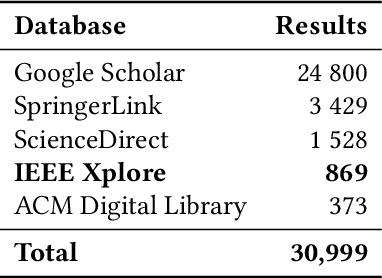
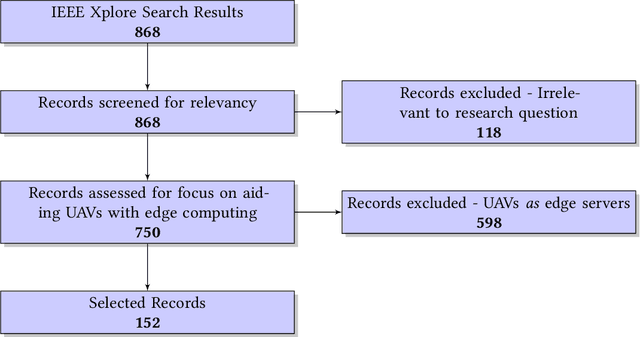
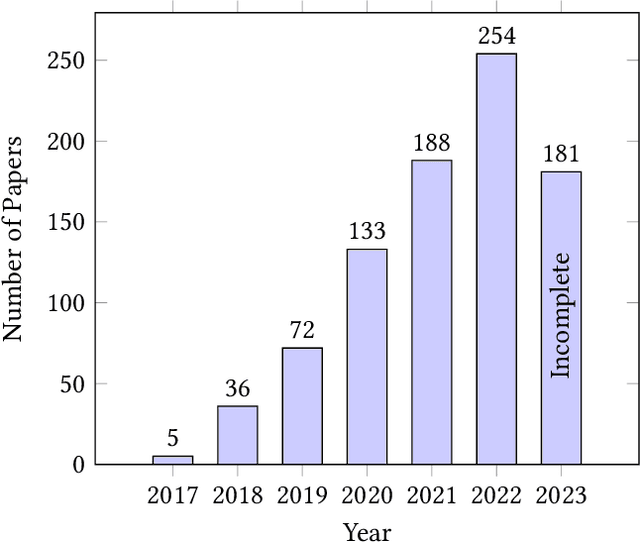
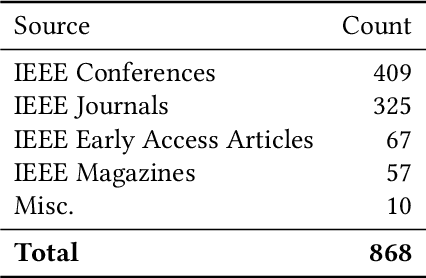
Abstract:Over the last years, Unmanned Aerial Vehicles (UAVs) have seen significant advancements in sensor capabilities and computational abilities, allowing for efficient autonomous navigation and visual tracking applications. However, the demand for computationally complex tasks has increased faster than advances in battery technology. This opens up possibilities for improvements using edge computing. In edge computing, edge servers can achieve lower latency responses compared to traditional cloud servers through strategic geographic deployments. Furthermore, these servers can maintain superior computational performance compared to UAVs, as they are not limited by battery constraints. Combining these technologies by aiding UAVs with edge servers, research finds measurable improvements in task completion speed, energy efficiency, and reliability across multiple applications and industries. This systematic literature review aims to analyze the current state of research and collect, select, and extract the key areas where UAV activities can be supported and improved through edge computing.
Predicting Temporal Aspects of Movement for Predictive Replication in Fog Environments
Jun 05, 2023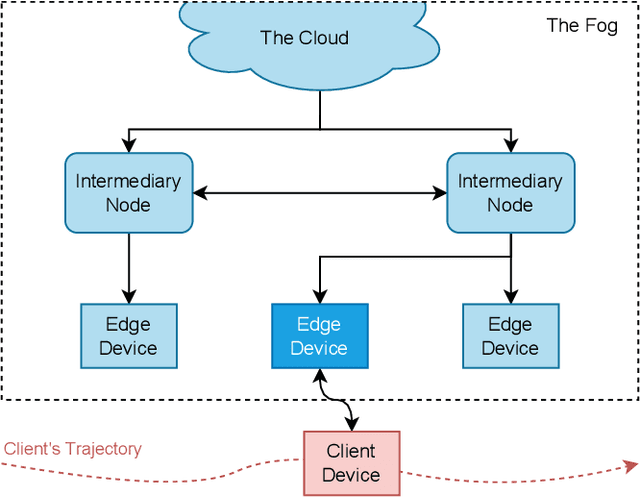
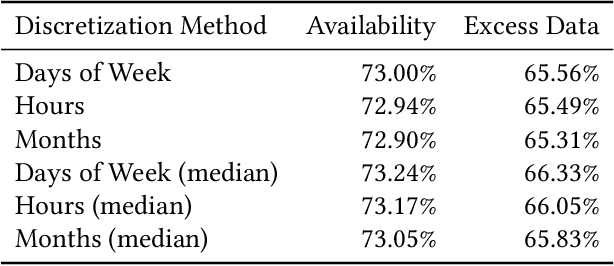
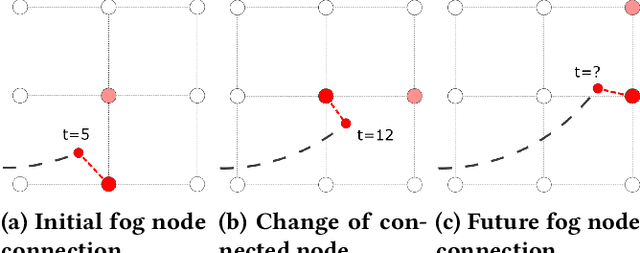

Abstract:To fully exploit the benefits of the fog environment, efficient management of data locality is crucial. Blind or reactive data replication falls short in harnessing the potential of fog computing, necessitating more advanced techniques for predicting where and when clients will connect. While spatial prediction has received considerable attention, temporal prediction remains understudied. Our paper addresses this gap by examining the advantages of incorporating temporal prediction into existing spatial prediction models. We also provide a comprehensive analysis of spatio-temporal prediction models, such as Deep Neural Networks and Markov models, in the context of predictive replication. We propose a novel model using Holt-Winter's Exponential Smoothing for temporal prediction, leveraging sequential and periodical user movement patterns. In a fog network simulation with real user trajectories our model achieves a 15% reduction in excess data with a marginal 1% decrease in data availability.
 Add to Chrome
Add to Chrome Add to Firefox
Add to Firefox Add to Edge
Add to Edge